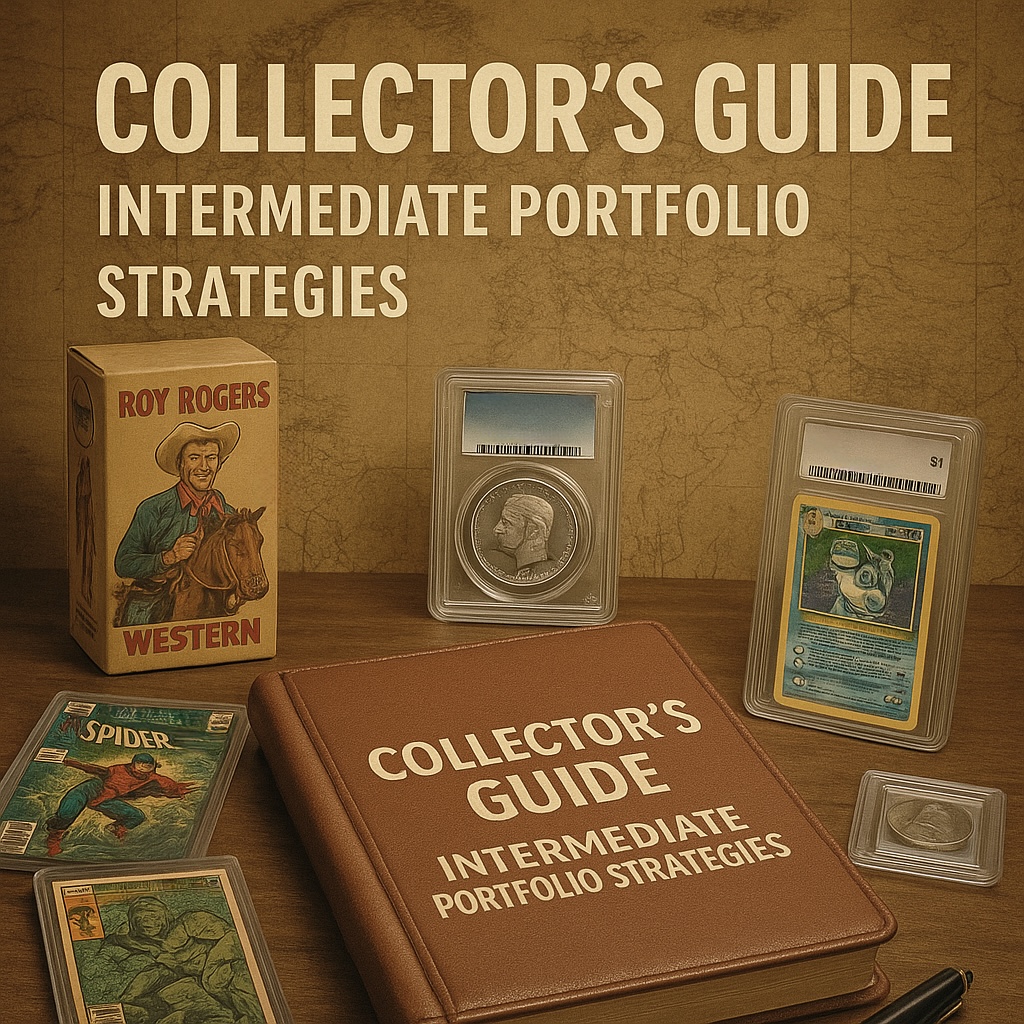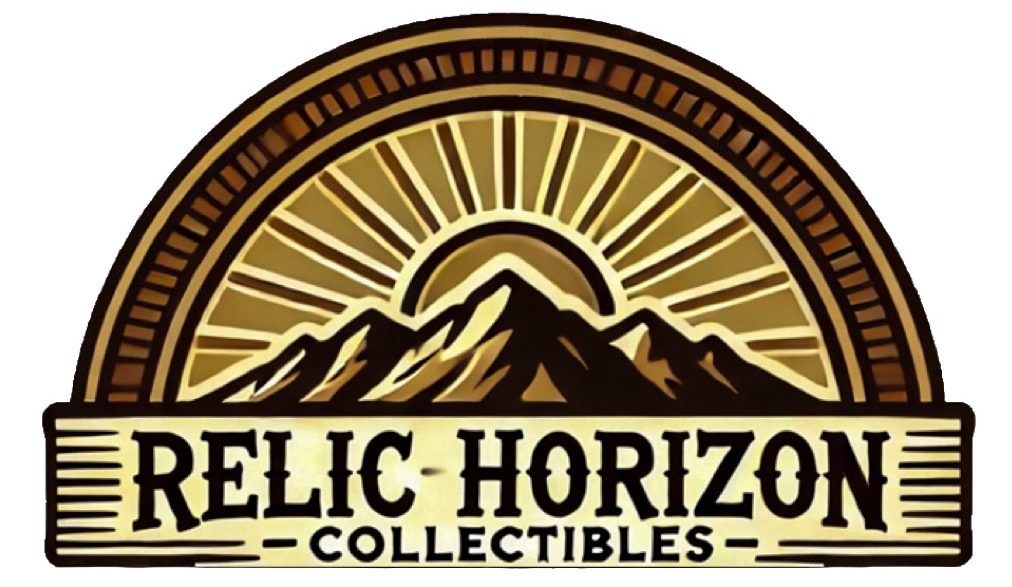
Collector’s Guide to Intermediate Portfolio Strategies
Deepening Your Expertise: Specialisation versus Diversification
When you step beyond the foundation, consider whether to focus intensely on a single niche or to expand your acquisitions across different categories. Each approach brings unique advantages and challenges that shape how you develop your collection.
Specialisation –
- Advantages
- Builds comprehensive subject matter knowledge in one field which makes it easier to spot undervalued items
- Enhances negotiating power when dealing with dealers or private sellers who recognise your expertise
- Allows you to follow market trends closely and capitalise on subtle shifts before the wider audience notices
- Disadvantages
- Greater exposure to price swings if that niche suddenly becomes less popular
- Less variety in enjoyment and display which may reduce personal engagement over time
- Risk of overconcentration if market dynamics change unfavourably due to external factors
Diversification –
- Advantages
- Spreads risk across various sub markets so one slump does not tank your entire portfolio
- Opportunity to benefit from different growth cycles simultaneously for comics, trading cards, memorabilia and more
- Keeps your interest fresh by engaging with several collecting communities and learning new skills
- Disadvantages
- Requires broader ongoing research so you cannot become a top expert in every category
- More time invested in learning grading standards, provenance verification and condition nuances for each segment
- Harder to track performance metrics across multiple types of assets unless you devote serious effort to data management
Next Steps for Collectors
- Compare price curves and community chatter for two categories you already know well. Which topic feels more engaging and manageable over the next 12 months?
- Join at least one online discussion forum related to each category. Note the volume and tone of conversations over a 30 day period.
- Create a short pros and cons table summarising what each approach would mean for your resources, time commitment and passion.
Whether you choose to specialise or diversify, the key is to be deliberate and document your reasoning. This clarity will serve you well if market conditions shift unexpectedly.
Advanced Valuation Techniques
Moving beyond simple grade and rarity assessments, you should integrate data analytics, market sentiment and historical trends. Focus on these five pillars to refine your valuation process:
| Technique | What It Measures | How to Apply |
|---|---|---|
| Population Reports | Total number of graded items at each level for specific issues or editions | Analyse PSA and CGC census data monthly to spot sudden surges or dips. Lower population often leads to premium values. If a top grade count jumps by 50 per cent in one quarter, consider what caused it before buying or selling |
| Comparable Sales Analysis | Actual prices realised by identical or close alternatives in auctions or private sales | Harvest data from auction archives and major marketplaces like eBay, Heritage Auctions and ComicConnect. Log final hammer prices, buyer premiums, shipping fees and date to build your own price curve. Adjust for slight differences in condition or edition |
| Sentiment and Community Indicators | Level of engagement in dedicated forums, social media groups and fan communities | Monitor activity on specialist subreddits, Discord channels, and new collector groups. Note spikes in mentions before big film adaptations, anniversaries or reboots. Higher chatter often presages price surges if supply is static |
| Price Frequency Charts | Distribution of sale prices for a given item over a defined time frame | Build a histogram of sale prices from your data logs. If you see clustering around a certain price range with occasional outliers, consider that “normal” value bands exist. Use this to judge whether an offer is truly exceptional or typical |
| Grade Migration Analysis | Tracking how raw submissions translate into final grades over time | Compile weekly or monthly logs of raw items submitted for grading versus final outcomes. If a greater share of raw units start receiving top grades, long term scarcity of the highest grades may grow; this is a bullish indicator |
Pro Tip Create a spreadsheet that logs weekly auction results for at least five benchmark items across two categories. Columns should include issue number, final grade, hammer price, buyer premium, sale date and seller notes. Track this for at least three months before making any major acquisition decisions.
Additionally, deploy basic statistical tools like moving averages and standard deviation calculations to assess price volatility. If a price’s standard deviation is high, expect larger swings; build that risk into your buy or sell threshold.
Maximising Returns: When to Buy, Sell, Hold
Timing is everything. A structured, unemotional approach helps you avoid “fear of missing out” or panic selling. Use this four step framework to evaluate each opportunity:
- Identify Buy Windows
- Target off peak periods when demand softens, major conventions and auctions often inflate prices so seek acquisition two to three months beforehand
- Monitor grading house population data; when you see a surge in raw submissions it can signal an upcoming market correction when many coins or cards flood the market at once
- Use price alerts on marketplaces for key items. Set notifications for price dips of 10 per cent below fair market value based on your own price curve
- Recognise Sell Signals
- Price Momentum If an item with a certain grade repeatedly sells above your target for four consecutive weeks consider listing it. Consistent strength indicates broad market consensus on value
- Collecting Cycles Sports cards often plateau after a season ends especially if the player retires or declines in performance. Comics tied to film or television adaptations tend to peak six to eight weeks before release and fade afterwards
- Tax Considerations If you hold an asset long term (over twelve months) you may qualify for more favourable tax treatment. Factor capital gains tax brackets into your holding horizon
- Define Hold Criteria
- Historical Significance Items tied to anniversaries, milestones or major cultural events appreciate steadily over years rather than months, think original printings of first issues, first appearances or championship memorabilia. Hold through short term dips if sentiment or pop culture synergy is strong
- Low Top Grade Population If fewer than ten copies at grade 9.8 exist, a small supply shift can produce outsized value changes. Retain those rare high grade pieces even if the broad market softens temporarily
- Portfolio Balance Keep at least twenty per cent of your collection in highly liquid items, mid grade cards or common variants, so that you can capitalise on sudden opportunities or cover urgent expenses without selling blue chip pieces at a loss
- Refine Decision Triggers
- Set a firm “minimum acceptable price” for each item when you add it to your portfolio. Record this in writing or in your inventory management system to reduce temptation when prices rise
- Every quarter reassess market conditions and revise your triggers based on changes in grading speed, hobby press coverage or macro economic shifts such as interest rates that affect discretionary spending on collectibles
- Include non financial factors such as upcoming anniversaries, movie releases or major hobby events. If a key anniversary falls within the next six months, it might pay to hold a bit longer
Action Point Create alerts on at least three distinct marketplaces (eBay, Heritage Auctions, specialist dealers) for each high interest item. Note all offers over your minimum acceptable price even if you plan to hold. Document the highest offer, date and buyer premium so you have clear reference when it’s time to decide.
Networking and Community Engagement
Building genuine connections often unlocks access to rare pieces before they appear on public listings. Prioritise credibility and trust by engaging consistently and offering value in return:
- Local Collector Gatherings
- Collaborate with community notice boards, libraries or hobby shops to schedule quarterly meet ups. Bring binders of recent acquisitions to spark conversation and demonstrate your own passion
- Offer to present a short talk on grading tips or proven strategies, becoming a recognised resource often leads to private deals from other collectors
- Prepare small giveaways such as free condition guides or laminated grading cheat sheets to seed goodwill and memory recall among participants
- Online Forums and Discussion Groups
- Participate actively (not just reading) on specialised hubs like Blowout Forums, Comic Book Realm and collector subreddit communities. Contribute original research, price matrices or historic comparables
- Offer fair minor trades or small cash deals to help build trust. Once collectors see you as reliable chances increase that they will send leads for more significant items
- Monitor for private group memberships where advanced collectors share inventory sheets or private auction listings. Respond courteously, maintain etiquette and never reveal sensitive negotiation details publicly
- Dealer Relationships
- Keep a concise purchase history that documents date, item number, grade, condition notes and price paid. Share relevant portions when initiating a large deal; this shows you are serious and transparent
- Even small regular purchases build goodwill. Over eighteen months you might move from being an occasional buyer to a “preferred bidder,” earning early notifications of consignment or new stock
- Negotiate net terms or “coming soon” lists so you can plan capital allocation rather than chasing items reactively. A simple template email outlining your interests and budget helps focus the dealer’s attention
- Auction House Insider Tips
- Subscribe directly to major auction house newsletters Heritage, Goldin Auctions, Weiss Auctions for early catalog releases. Review lot details and provenance long before the sale date
- When possible attend in person or virtually “preview viewings.” Inspect items under various lighting conditions. Note any restoration or imperfections the photo galleries might not show clearly
- Develop rapport with auction house consignment staff. If they recognise you as a knowledgeable bidder they sometimes share insights on lot competition or suggested reserve prices
Documentation Note Always keep clear written records of agreements: condition standards, payment timelines, shipping terms and any return allowances. Email confirmation creates a traceable paper trail and reduces misunderstandings.
Advanced Storage and Display Solutions
As your collection grows in both scope and value, basic archival boxes will no longer suffice. Invest in innovative storage solutions tailored to preserve condition, ensure security and showcase prized items elegantly:
Custom Climate Controlled Cabinets
- Integrated Thermo Humidity Sensors Cabinets with built in digital monitors can alert you if temperatures stray outside the 20 to 22 °C range or humidity exceeds 45 to 50 per cent. Such control prevents mould growth and paper warping
- UV Filtered Glass Doors High quality tempered glass with UV filtering protects tablets, framed comics and graded cards from light induced fading while keeping them on display
- Soft LED Lighting Install low heat LED strips that illuminate interiors without generating heat. Choose a “warm white” tone that does not distort the true colours of items on show
- Fire and Flood Safeguards Consider a cabinet with reinforced locking mechanisms, water resistant seals and a built in fire retardant lining. For extremely valuable collections, integrate a sensor that connects to your home alarm system
Modular Racking Systems
- Adjustable Shelving Choose heavy duty adjustable shelves that can accommodate taller or heavier items such as vintage toys, statues and framed art prints. Confirm that each shelf holds at least 30 kg per metre to handle large volumes safely
- Vibration Dampening Features For coins, fragile ceramics and rare porcelain figurines, install racks with vibration isolating feet or soft rubber gaskets between shelf layers. Even minor tremors from foot traffic can cause micro abrasions over time
- Pull Out Drawers Shallow pull out drawers with foam inserts are ideal for storing loose coins, pins or small memorabilia in protective compartments. Label each drawer clearly and organise by year, series or theme
- Anti Tip Anchors Secure large shelving units to walls with anti tip brackets. Many tragedies occur when tall cabinets tip forward; a simple anchor reduces risk significantly
Digital Cataloguing and Backup
- High Resolution Imaging Photograph every new acquisition from multiple angles with scale references. Capture label reverses, provenance certificates and any unique identifiers. Save raw image files in lossless formats (TIFF or PNG)
- Cloud Based Inventory Management Use specialist apps such as Collector Systems or Gemr which track purchase dates, costs, grades and sales history. Assign unique ID codes to each item and store supporting documentation in PDF format
- Regular Backups Schedule weekly backups of your digital catalogue to two separate cloud accounts and an external solid state drive. In case of data corruption or hacking incidents you can restore your full inventory quickly
- QR Code Integration Stick small QR code labels on the back of framed pieces or on storage boxes. When scanned, each code links directly to your digital record with full provenance, current valuation and condition notes
Building a Long Term Portfolio Plan
Translate your short term actions into a coherent multi year strategy. This five step blueprint helps you organise tasks, set measurable goals and adapt to market shifts:
| Step | Action | Timeline | Outcome |
|---|---|---|---|
| 1 | Comprehensive Audit of Current Holdings | Week 1 | Complete inventory listing every item with high resolution images, grade, condition notes and provenance. Assign each item a unique ID code. |
| 2 | Identify Portfolio Gaps and Concentration Risks | Week 2 | Determine which categories you are under represented in. Pinpoint highly volatile items that may need disposition or hold status. Prioritise next acquisition targets and potential sale candidates. |
| 3 | Set Annual Acquisition and Disposition Goals | Month 1 | Define the number of new items to acquire, target return on investment percentages for each purchase. Outline specific items or themes to sell or trade based on risk tolerance and cash flow needs. |
| 4 | Establish Performance Metrics and Reporting Cadence | Quarterly | Track portfolio growth through value appreciation, liquidity ratio (items sold vs held), and community sentiment indices. Generate a simple quarterly report summarising gains, losses and notable market developments. |
| 5 | Annual Review and Rebalance | Annually | Adjust budget allocations based on past year performance. Explore emerging sub niches, e g retro gaming memorabilia or digital collectibles, and recalibrate acquisition goals accordingly. |
Reminder Markets are dynamic. Maintain flexibility by keeping at least 10 per cent of your annual budget in highly liquid items, mid grade cards or common variants, to capitalise on unexpected deals.
Consider projecting a five year outlook that factors in potential hobby trends, major anniversaries, and macro economic indicators such as interest rates and inflation. Document this in a simple slide deck or PDF and update every year to keep yourself accountable.
Risk Management, Insurance and Provenance Verification
Managing risk is as crucial as sourcing valuable items. Consider these essential safeguards to protect and authenticate your portfolio:
- Insurance Coverage
- Obtain specialised insurance policies tailored to collectibles. Standard homeowner’s policies often exclude or under value rare items. Work with an insurer experienced in high value memorabilia to get accurate appraisals
- Include “all risk” coverage if possible. This covers damage from fire, flood, theft and accidental deterioration. Review policy limits annually and adjust your declared value as your collection appreciates
- Provenance and Authenticity Checks
- Always request original receipts, certificates of authenticity and any ancillary documentation from sellers. Record chain of custody for high value items to maintain market trust
- For coins and stamps, obtain third party certificates from recognised grading houses. For comics, request CGC or CBCS certificates. With artwork, use Piero guides or consult registries of authenticity when available
- When in doubt, employ professional appraisers who specialise in your niche. Obtain a signed appraisal letter and store it with your digital catalogue
- Counterfeit Detection
- Learn common counterfeit indicators in your category. For trading cards, check centring measurements, surface texture and corner sharpness. For comics, examine newsprint type, colour saturation and staples
- Use UV flashlights, magnification tools and digital microscopes for close inspection. Document your findings with high resolution macro images that can be compared later if authenticity is questioned
- Join investigative forums that expose fakes and forgeries. Share your experiences and research to help protect the community and get insights on new counterfeit methods
- Legal Considerations
- For very high value transactions, draft simple sale or purchase agreements that spell out condition statements, return policies, payment timelines and dispute resolution forums. Email alone may not suffice if a legal conflict arises
- Be aware of import and export restrictions for certain categories, some antiques or culturally significant items require permits to cross borders
- Maintain records of all major transactions including signed receipts, bank transfers and escrow details. Organise these chronologically in your digital backup
By combining strong insurance, rigorous provenance checks and safeguards against counterfeits, you significantly reduce downside risk and preserve long term value.

